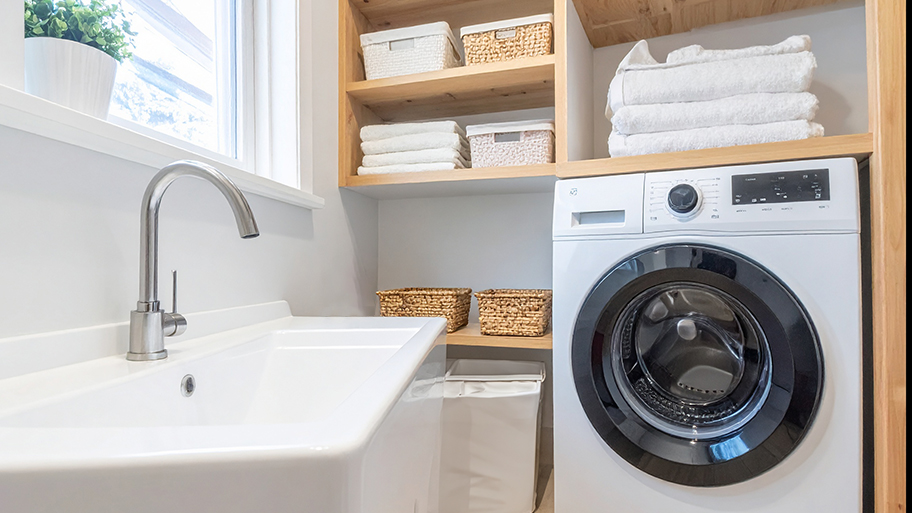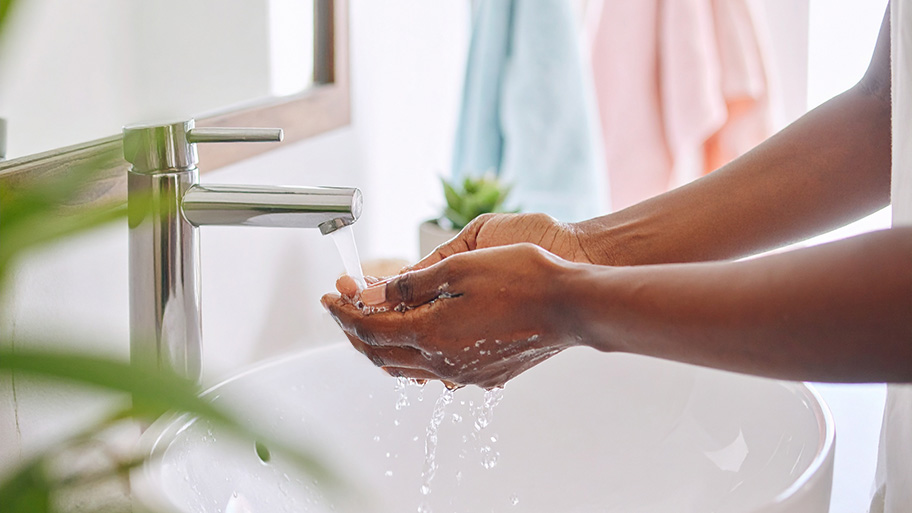
Everyone can relate to having toilet issues—we’ve all been there. There are several reasons why your toilet might need repairs, and the cost varies based on the damage.
Knowing how to read a water meter can keep unexpected costs out of your utility bill


Water meters connect to your home’s main water line.
There are two types of water meters: digital and mechanical.
Meters measure water usage in gallons or cubic feet.
A water meter can help you detect leaks and avoid high utility bills.
Life’s filled with many great surprises, but an unexpected water bill isn’t one of them. If you’ve experienced an unusually high water bill, knowing how to read your water meter can help you find the root cause. Whether it’s a leak, faulty equipment, or an inaccurate estimate from the water company, this checklist can help.
Understanding how to read a water meter is important for two main reasons: It can help you track how much water your household is using each day and alert you to potential leaks in your home’s water line. Note your water meter’s numbers at the beginning and end of the day. That way, you can compare the two numbers to see how many gallons have been used.
A substantial increase in the number of gallons could mean there’s a leak somewhere. Here’s how to check for a leak using your water meter:
Make sure there’s no water running inside or outside your house. This includes everything from your washer to the kitchen sink.
Look for the fine flow indicator, which measures lower volumes of water commonly associated with leaks. Usually, this is in the form of a small triangle or diamond shape on the meter’s face. Nothing should be moving when water isn’t on.
Note the main meter’s reading, and come back in an hour. If you notice a higher reading, you may have a leak.
Water meters are small, round devices connected to your home’s main water line that track your water usage. Water usage is measured in gallons or cubic feet. One foot is equal to roughly 7.5 gallons. So how do you find your water meter? It’s usually hiding somewhere near your main water line. Your water meter may be located:
Outdoors or indoors near where your main line enters your house.
In a basement, garage, or utility room.
In a heated area of your home (to prevent your water meter from freezing).
Some water meters are enclosed in a box labeled “water.” Sometimes the box is transparent, so you can get a reading without tampering with the box. If you can’t find your meter, contact your water company.
According to the Environmental Protection Agency, the average American family uses about 300 gallons of water a day. However much you use, the type of meter in your home determines how the water company will create your monthly bill. There are two types of water meters:
Digital water meters: Many new homes have digital water meters with automated metering technology (also known as smart meters). This type of meter automatically reports your water usage to the water company. In turn, you get a precise bill for the exact amount of water you’ve used. Most people with digital meters can track their daily water consumption using a mobile app or the water company’s website.
Mechanical water meters: Mechanical water meters, or analog water meters, are typically found in older homes. These usually don’t come with automated metering technology, and residents will pay an estimated water bill every month. Every few weeks, the water company will send someone to your home to read your meter, then adjust your bills based on the reading. If you’ve used less than the initial estimate, you’ll get a credit. If you’ve used more, you’ll have to pay the difference.

How do you tell the difference between both types? Digital meters have a digital screen that displays your water usage. Mechanical meters either use an analog flip counter (also called straight-reading meters) or a series of dials (known as round-reading meters).
Before you inspect your water meter, you need to know how to read it. Digital water meters are straightforward, whereas older mechanical water meters require a little know-how.
Locate the front of the water meter (this may require opening the top of the box).
If there’s a solar panel below the screen, you may need to shine a flashlight on the panel, so the numbers light up and you can read them.
Look at the small screen, and you should see your water usage on the display.
The display may alternate between water usage and flow rate. Meter read is gallons used, and flow rate is gallons per minute.
Unlike straight-reading and round-reading water meters, digital water meters give an as-is reading of gallons used.
Locate the front of the water meter (this may require opening the top of the box). Flip up the meter lens cover if applicable.
The sweep hand measures water use in gallons. The number on the far right is a static “0.” As the hand moves from one number to the next, one gallon of water passes through the meter.
A complete rotation around the face is equal to 10 gallons.
For example, let’s say you see 95210.03 on your straight-reading water meter. This is the total number of cubic feet of water recorded since the meter’s installation. You would see 952 cubic feet on your utility bill if it’s recorded in units of 100 cubic feet. Typically, U.S. water meters measure in gallons or cubic feet. For reference, 1 cubic foot equals 7.48 gallons, so 100 cubic feet equals 748 gallons.
Locate the front of the water meter (this may require opening the top of the box).
Look at the six dials labeled 100,000, 10,000, 1,000, 100, 10, and 1 cubic foot. Each dial has an indicator needle that’s pointing to a number. Start at the 100,000 dial, look at where the indicator needle is pointing, and record the number.
Move to the 10,000 dial, look at where the indicator needle is pointing, and record the number.
Continue moving clockwise, reading each dial and recording each number. Stop at the cubic foot dial, which has no numbers. Put your recorded numbers together to get your water usage.
For example, if your dials read 0, 0, 4, 3, 5, and 2, your water usage is 4,352 cubic feet. Regardless of the type of meter, you can get your total monthly water usage by subtracting your current reading from the previous month’s reading (providing you read your meter every month). Use this figure to check your monthly bill.

According to the U.S. Environmental Protection Agency, leaks are responsible for 12% of water use in the U.S. Catching leaks can help you conserve water and lower your utility bills, so it's important to look for leaks during your water meter inspection. Some meters have a leak indicator, which makes it easy. Others don’t.
On digital meters, the leak indicator is a small icon or circle that flashes when there is a leak. On mechanical meters, the indicator is a small triangular or star-shaped wheel that spins when a leak is present. Check for a leak using the following instructions:
Turn off all the taps in your home. Unplug or turn off all appliances that use water (think: sprinkler systems, ice makers, your HVAC system, etc.). Do not turn off your main water valve, so water can flow.
Look at your water meter. If the leak indicator is blinking or spinning, you probably have a leak. If you have a round-reading mechanical meter and the cubic foot dial is moving, you also probably have a leak.
Alternatively, you can read your water meter, then check back in two to four hours (at a minimum) to see if the reading has changed. Your reading should be the same as long as your taps and appliances are still turned off (and no one snuck in a quick shower). If the reading is different, you probably have a leak and should hire a plumber to fix the issue.
Like all technology, water meters can break. It’s not common, but it’s still worth checking that your water meter is giving an accurate reading. You don’t have to do this monthly, but you may want to do it annually or if you notice an unusual bill and can’t find a leak. To check the accuracy of your water meter:
Start with a gallon container and a 5-gallon bucket. Use the gallon container to fill your bucket with 5 gallons of water.
Mark the water level with a permanent marker (this ensures accuracy during the test). Dump out the water and start the test.
Turn off all your taps. Make sure all your water-using appliances are turned off (including dishwashers, ice makers, sprinklers, and your HVAC system).
Read your meter. Go to a tap and fill your bucket to the previously marked line.
Once the bucket is full, turn off the tap. Read your meter again.
If your meter works properly, it will show that you’ve used 5 gallons or 0.67 cubic feet of water.
If your meter hasn’t accurately recorded your water use, it’s time to call your water company. They can diagnose the issue and replace or repair your water meter as needed. A repair or replacement is usually free as long as you didn’t illegally tamper with the meter.
From average costs to expert advice, get all the answers you need to get your job done.

Everyone can relate to having toilet issues—we’ve all been there. There are several reasons why your toilet might need repairs, and the cost varies based on the damage.

Here's a look at how much you can expect to pay to replumb your mobile home with new pipes that meet all local code requirements and environmental regulations.

The cost to add plumbing to a detached garage depends on several factors, including the type of plumbing and the garage's distance from your home.

A new showerhead is an easy, affordable way to upgrade any bathroom. Learn how to change a showerhead, from removing the old to installing the new.

Plumbing a bathroom starts with knowing the steps for a successful DIY project. Follow this guide to learn how to plumb a bathroom yourself.

Touchless faucets offer benefits like saving water, avoiding germs, and simplifying cleanup. Learn the top benefits of hands-free faucets and decide whether to switch.